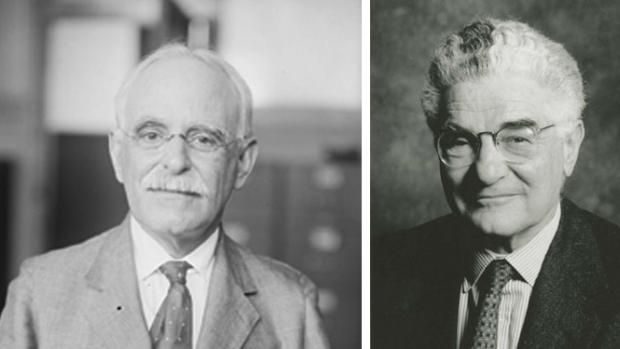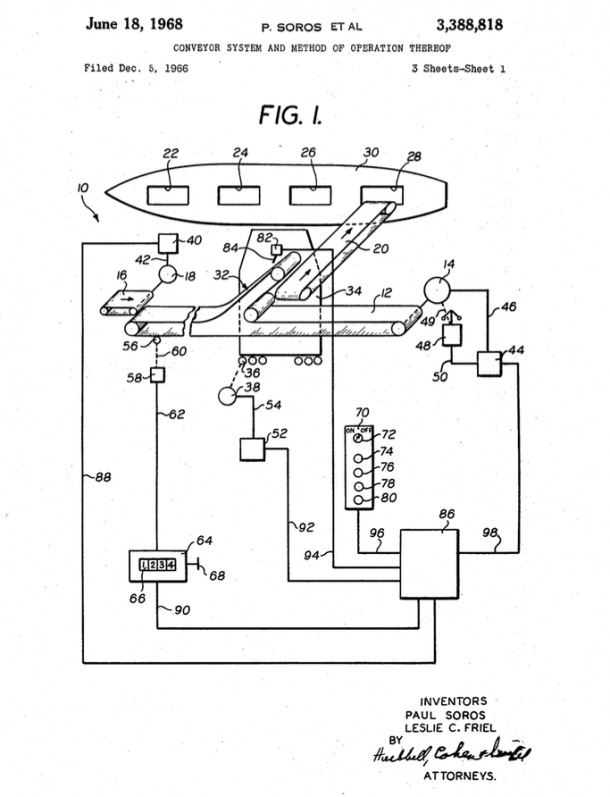The Canal Connection
A look back on the important contributions alumni made to shipping and the Panama Canal

With the new Panama Canal extension opened yesterday, journalists are reporting some mind-boggling figures: the new access lane took 40,000 workers nearly 10 years to dig, and the project cost well over $5 billion. It will allow a new breed of massive ships — capable of carrying loads of up to 14,000 containers — to pass through, nearly tripling the capacity of the original canal, which can accommodate ships carrying only about 5,000 containers.
As experts try to predict the project’s impact on the global shipping industry, it’s a fitting time to look back on the important contributions that Tandon alumni have made in that arena.
Modern Wonder
Henry C. Goldmark graduated in 1874 from what was then commonly known as Poly with a bachelor’s degree in civil engineering. He was an instrumental figure during the building of the original Panama Canal, which commenced in 1904 and took a decade to complete.
Although the project’s planners had at first conceived of a sea-level canal, it soon became evident that the region’s terrain and possibility of landslides during construction would make that difficult. Instead, it was decided to construct a series of locks, which would raise and lower the level of a stretch of waterway so that ships could smoothly traverse portions of varying depths. The water level would be controlled by buoyant gates powered by electricity.
Construction of the canal’s three locks began in mid-1909. The locks, with each of their chambers measuring 110 feet wide by 1,000 feet long, lifted ships 85 feet above sea level and represented one of the most innovative feats of engineering the world had seen to that date.
Goldmark is credited with designing the locks’ massive gates, which ranged from 47 to 82 feet high. “The design and manufacture of all of the lock gates was one of the Canal’s great engineering challenges and one of its greatest triumphs,” one historian wrote. (At a cost of more than $350 million, the canal, which was officially opened in 1914, was the most expensive construction project undertaken in the U.S. to that point.) Goldmark, who was ultimately awarded a medal of honor by President Howard Taft for his crucial contribution to the project, returned to Poly in 1931 to address the members of the American Society of Civil Engineers — a group that ultimately named the canal one of the seven wonders of the modern world.
Shipping News
Just as the Panama Canal undeniably transformed global trade by creating an efficient shortcut between the Atlantic and Pacific oceans, Paul Soros (‘50), a Hungarian immigrant who founded an eponymous engineering firm that was involved in planning ports in almost 100 countries, transformed the way massive ships are handled.
Challenged by the owners of an iron ore mining company who needed a loading port but couldn’t afford the estimated costs, Soros remembered spending his childhood summers on an island in the Danube next to the passenger ship terminal. He recalled watching hundreds of ships dock, and he realized he had gained something of an instinctive understanding of mooring systems. He came up with the idea of mooring incoming ships onto floating buoys, rather than building large, fixed marine structures — in effect, bringing the piers to the ships, rather than the ships to the piers — which turned out to be a cost-effective and efficient solution. (Ships moored in this way could even be safely loaded and unloaded in rough seas.)
Soros Associates ultimately grew to handle one-third of the world’s shipping trade in bulk materials like coal and iron ore, and Soros became one of the most dedicated supporters in the history of the school, serving as a trustee for decades.

One of Paul Soros' patents that revolutionized bulk cargo shipping (source: Poly Archives)




